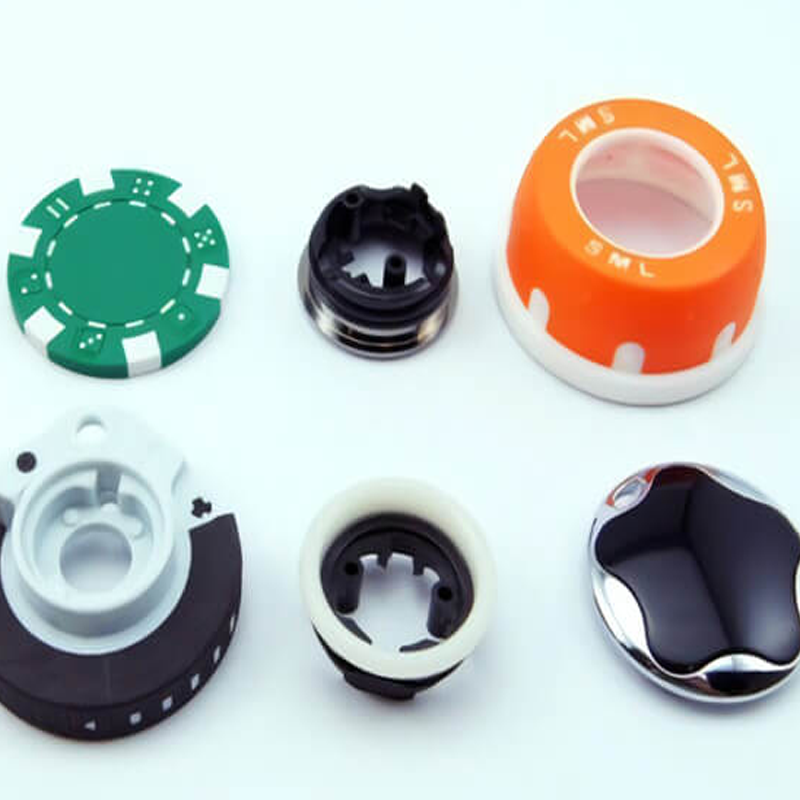In the ever-evolving landscape of manufacturing, two techniques have emerged as frontrunners in the production of complex and high-quality components: 2-shot injection molding and overmolding. These advanced methods offer unique advantages that cater to the growing demands for efficiency, durability, and design flexibility in various industries. As manufacturers strive to create innovative products that not only meet but exceed consumer expectations, understanding the intricacies of these processes becomes essential. In this blog, we will explore the advantages and processes associated with 2-shot injection molding, compare them to overmolding, and highlight how these techniques can enhance product performance and streamline manufacturing operations. Whether you are an industry veteran or new to the field, this comprehensive blog will provide valuable insights into making informed decisions for your next project.
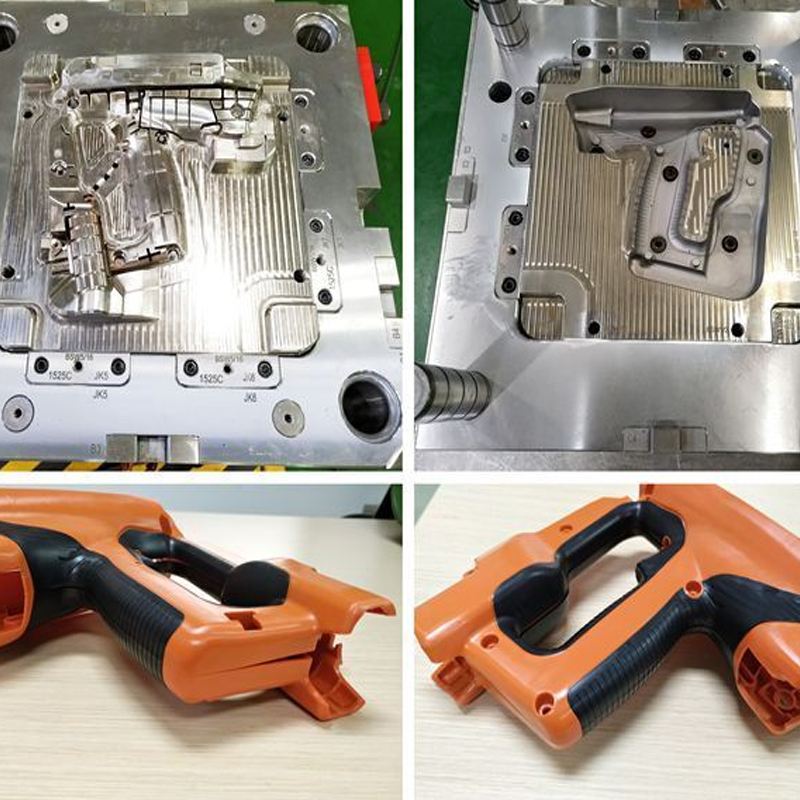
What Is 2-Shot Injection Molding
2-shot injection molding, often referred to as dual-shot or double injection molding, is a sophisticated manufacturing technique that enables the production of composite components using two distinct colors or types of plastic materials in a single molding cycle.
This advanced process employs a specialized two-shot injection molding machine, which features two separate sets of screws and barrels. This innovative technology allows for the creation of components that not only possess visual appeal but also exhibit enhanced functional strength. As a result, 2-shot injection molding is widely utilized across various sectors, including the automotive, consumer electronics, and medical device industries.
![Advantages and Processes of 2-Shot Injection Molding and Overmolding Comparison3]](https://www.toolingsun.com/wp-content/uploads/2024/10/Advantages-and-Processes-of-2-Shot-Injection-Molding-and-Overmolding-Comparison3.png)
The Two-Shot Injection Molding Process
The two-shot injection molding process encompasses several intricate steps designed to create composite components in a single molding cycle. Below is a detailed overview of the key stages involved:
-
Mold Design and Fabrication:
Two-shot molding requires a specialized machine and meticulously designed molds. The mold design must account for the flow dynamics, cooling rates, and solidification properties of both materials to ensure effective integration during the molding process.
-
Initial Injection:
The process begins with the injection of the first material into one of the machine’s injection units, shaping a portion of the component. Once this initial injection is complete, the semi-finished part remains in place within the mold or is repositioned for further processing, typically through a rotational or shifting mechanism.
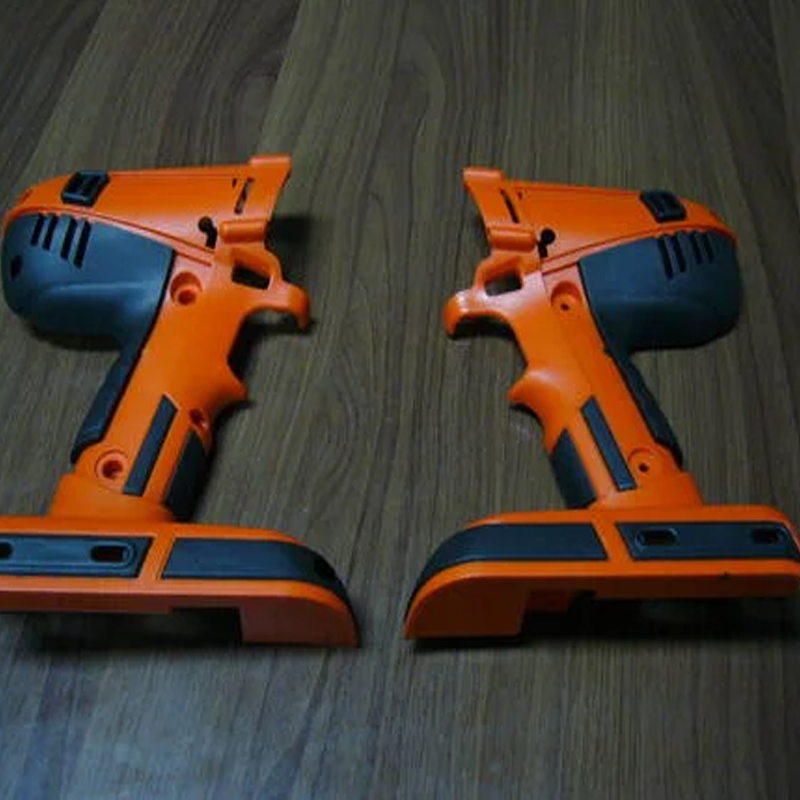
-
Mold Rotation or Repositioning:
Depending on the specific two-shot molding system in use, the semi-finished component may need to be transferred to a secondary injection position. This transfer is achieved through either mold rotation or shifting, depending on the equipment’s design.
-
Secondary Injection:
Once the first material has solidified and is correctly positioned, the second material is injected through a different injection unit. This step is crucial as it facilitates the bonding of the second material to the first, requiring precise control to ensure optimal adhesion.
-
Cooling and Solidification:
Following the second injection, the complete assembly cools and solidifies within the mold. This stage is vital for ensuring the final product’s integrity, demanding careful management of cooling rates and duration.
-
Mold Opening and Product Ejection:
After sufficient cooling and solidification, the mold is opened, and the finished two-color component is ejected.
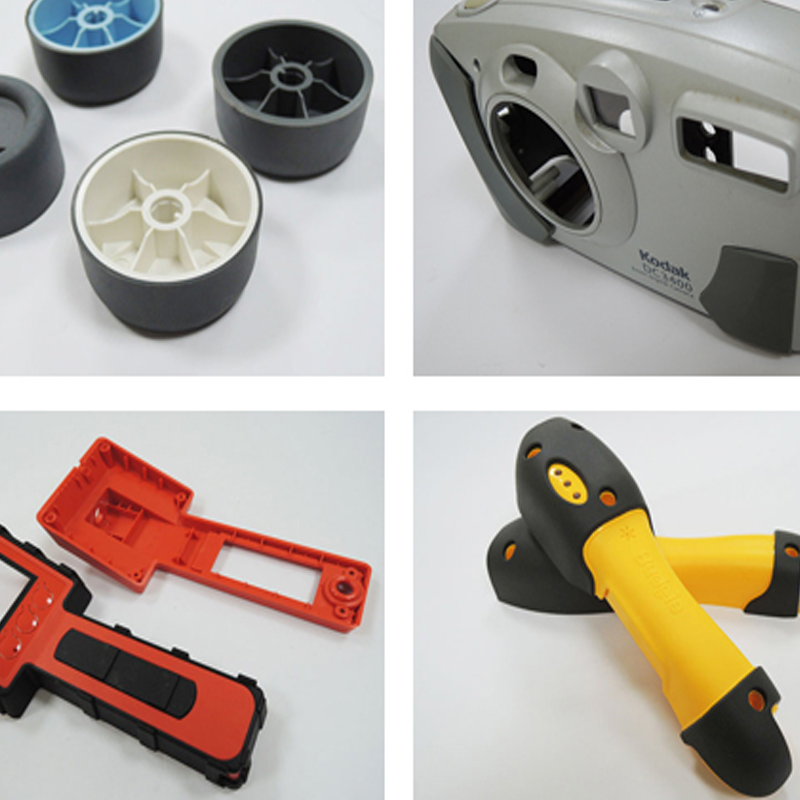
This comprehensive process highlights the technical intricacies and precision inherent in two-shot molding, enabling the production of high-quality, multifunctional components for various applications across multiple industries.
Advantages and Disadvantages of Two-Shot Molding
Two-shot molding offers the significant benefit of producing intricate, high-quality products with varied aesthetics in a single molding cycle. This process can streamline production, reduce post-processing requirements, and ultimately lower overall costs. However, it also necessitates stringent standards for mold design and manufacturing, leading to relatively high initial investments.
Advantages:
-
Streamlined Production and Cost Efficiency:
By consolidating the injection of multiple materials into a single cycle, two-shot molding eliminates the need for additional processes, resulting in both reduced production time and lower costs.
-
Superior Product Quality:
This technique yields products that are more durable and structurally stable. The integration of two different materials enhances overall performance characteristics, such as impact resistance and sealing capabilities.
-
Design Versatility:
Two-shot molding empowers designers to incorporate various colors and types of plastics into a single component, providing unique visual and tactile features that enhance product appeal.
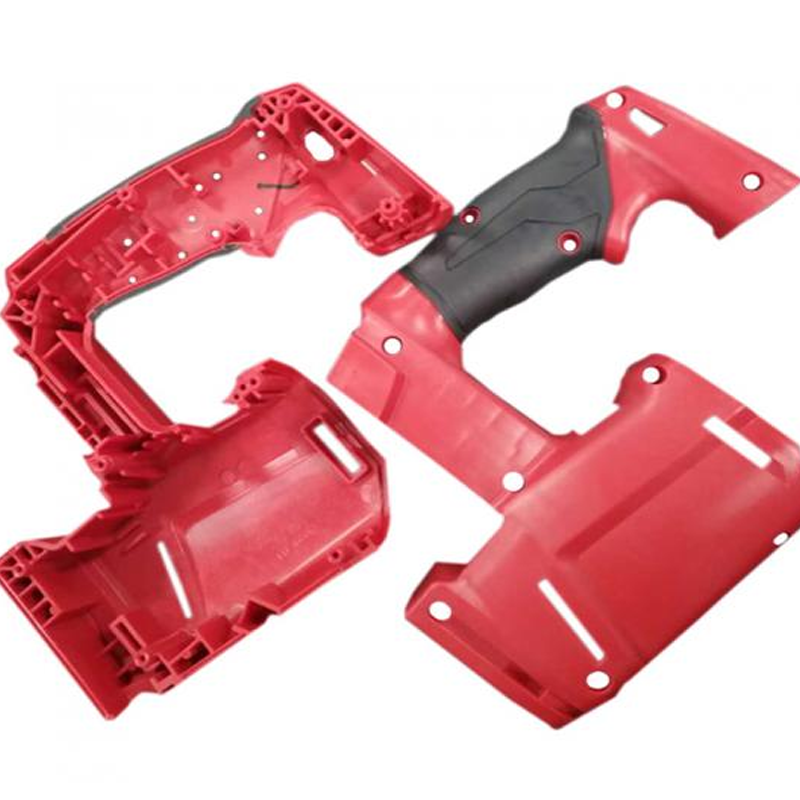
Disadvantages:
-
Elevated Mold Costs:
The intricate requirements for two-shot molds lead to increased costs. The design and fabrication of these molds demand extensive expertise and precision, significantly raising initial investment levels compared to traditional molding methods.
-
Higher Production Rates:
Specialized two-shot molding machinery tends to be more expensive than conventional injection molding equipment. Additionally, the operation of these machines often requires specialized training, further contributing to elevated hourly operational costs.
-
Environmental Challenges:
The use of distinct materials complicates recycling efforts, as effectively separating these materials can be difficult. The complexity of recycling processes and the challenge of reusing production waste present significant hurdles for two-shot molding operations.
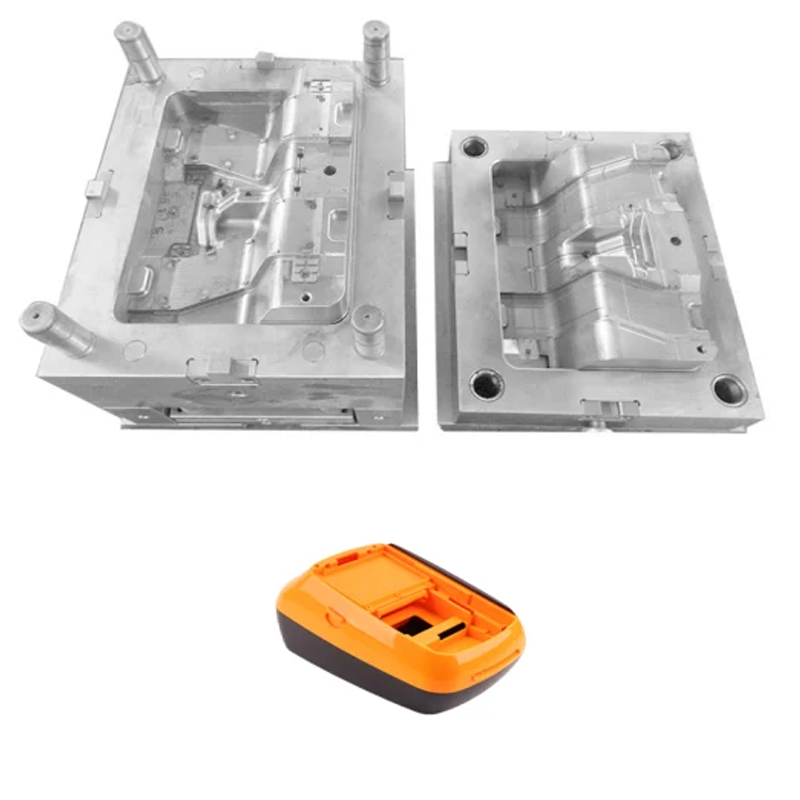
Mold Specifications for Two-Shot Molding
Two-shot molding is an advanced injection molding technique that utilizes two distinct materials or colors simultaneously within a single molding cycle. This process necessitates exceptionally precise mold designs to ensure optimal results. Key considerations for successful implementation include:
Precision in Alignment
Achieving precise mold alignment is vital for the success of two-shot molding. This technique employs a configuration of two movable lower molds and two stationary upper molds that must rotate or shift to align correctly during the molding process. It is critical that both mold sets maintain complete consistency in outer dimensions, internal cavities, and height. Typically, a Coordinate Measuring Machine (CMM) is employed during production to verify mold accuracy, preventing injection defects, such as flash, that can arise from misalignment.
Thorough Mold Design and Evaluation
The design and evaluation process for molds must be exceptionally thorough. Given the substantial investment required for two-shot molds, any design flaws can lead to costly modifications for both mold sets. As such, the design phase must consider several factors, including the configuration of gates and runners, the arrangement of sliders, and the cooling system layout. Each of these elements requires meticulous verification and validation to avoid oversights.
Automated Degating
In light of the emphasis on production efficiency within two-shot molding, mold designs should incorporate automatic degating mechanisms whenever feasible. This approach allows for the automatic removal of excess material from injection ports at the conclusion of the molding cycle, minimizing manual labor and enhancing overall production efficiency.
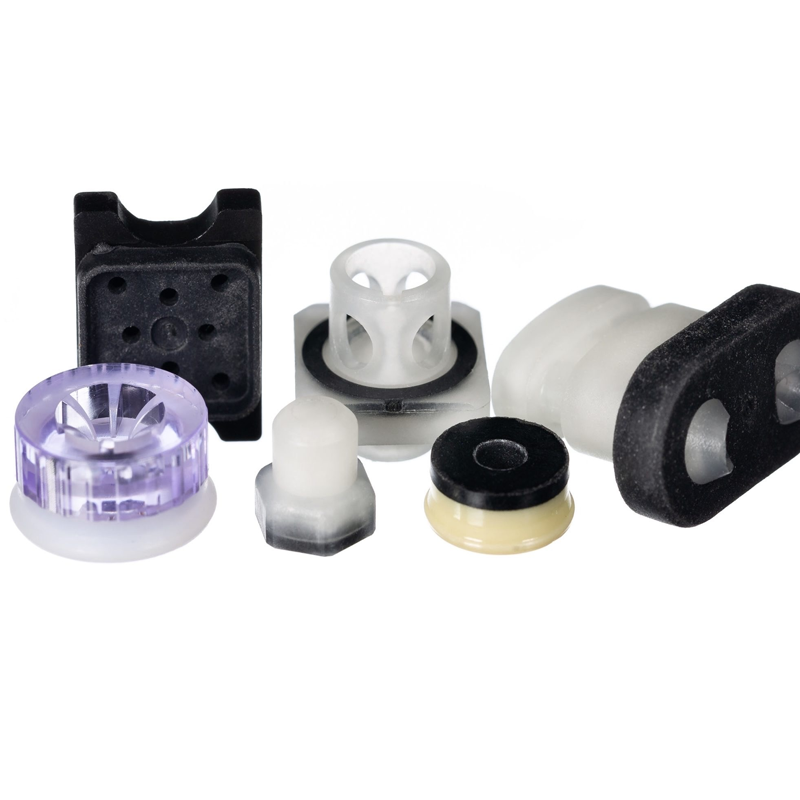
Material Considerations for Two-Shot Molding
In the context of two-shot molding, achieving a robust bond between the substrate and overmolding layer hinges on several critical factors, including material selection, mold design, and processing parameters. These elements work together to ensure that the two different materials integrate seamlessly in the final product, creating a composite that is both structurally sound and functionally effective.
Material Selection and Compatibility
The choice of compatible materials is essential for a successful bonding process. The substrate and overmolding materials must exhibit compatibility in their molten states without triggering any detrimental chemical reactions. Material suppliers can provide valuable insights regarding optimal material pairings that facilitate strong adhesion.
Surface Treatment Techniques
In certain instances, the substrate’s surface may undergo specialized treatments—such as sandblasting, chemical etching, or surface activation—to enhance its roughness and chemical reactivity. These treatments significantly improve the bond strength with the overmolding layer.
Mold Design Dynamics
The design of the mold plays a crucial role in achieving a successful fusion of the two materials. The mold must precisely control the flow paths of each material to ensure that the second material achieves stable and uniform coverage over the surface of the first material.
Injection Molding Parameters
Careful adjustment of injection molding parameters, including temperature, pressure, and cooling duration, is essential to accommodate the characteristics of both materials. Optimal temperature and pressure settings promote effective bonding, while appropriate cooling times ensure solidification occurs without inducing internal stress that could compromise bond integrity.
Molecular Diffusion Process
At the interface of the two materials in their molten state, molecular diffusion occurs, whereby molecules from one material penetrate into the other. This process fosters the formation of stronger chemical bonds and physical entanglements, thereby enhancing adhesion between the two materials.
Commonly Utilized Materials
– Substrate Materials: ABS, PC, PC/ABS, PP, PMMA, PA6, PA66, etc.
– Overmolding Materials: TPE, TPU, Silicone, and various hard plastics used as substrates.
Consultation with material suppliers is recommended to confirm the compatibility of selected materials.
By employing the strategies and mechanisms outlined above, two-shot molding achieves a secure bond between the substrate and the overmolding layer, resulting in composite products that are both visually appealing and high-performing. This innovative technology is extensively applied across various industries, including electronics, automotive components, and medical instruments, broadening the possibilities for product design and functionality.
Comparison of Two-Shot Molding and Overmolding
When evaluating two-shot molding technology, it is common to draw comparisons with overmolding. While both techniques involve multiple injection molding processes, several key distinctions set them apart.
Bonding Strength
Two-shot molding excels in achieving robust bonding strength between materials. This technique ensures a tight integration of two materials through a continuous process. Because the substrate material from the first injection remains partially molten, the molecular chains of the two materials can effectively interweave and bond, resulting in a stronger connection. Moreover, two-shot molding provides consistent cooling rates and minimizes shrinkage discrepancies between the materials, reducing the risk of separation caused by mismatched shrinkage. In contrast, overmolding requires the manual placement of the first injection-molded component into a second mold, which can compromise the integrity of the bond.
Production Cost
Two-shot molding offers enhanced efficiency by completing both injection cycles within a single continuous process. Although the hourly production costs may be higher, the overall efficiency can lead to lower total production expenses. Conversely, overmolding tends to elevate labor costs due to the manual handling involved in placing the substrate part into a separate mold. The separation of injection processes in overmolding can further inflate overall processing costs. However, for smaller production runs, overmolding might present a more viable option due to its lower initial investment requirements.
Design Flexibility
Two-shot molding provides superior design flexibility. Its unique production methodology allows for the execution of more intricate designs during the second injection phase, such as activating sliders and lifters only after this injection. This feature offers a broader scope for innovative product design. Overmolding, however, limits the potential for integrating cores or sliders for complex geometries once the substrate component is positioned in the mold, thereby constraining design diversity. Some specific design features can only be realized through the application of two-shot molding.
Manufacturing Precision
Two-shot molding achieves a higher level of manufacturing precision, as the continuous production process does not necessitate the removal of the substrate part from the mold, thereby enhancing overall product accuracy. In contrast, overmolding introduces potential positioning errors during the manual placement of the first injection-molded part into the second mold, which can adversely affect the final product’s precision.
Conclusion
In summary, while both two-shot molding and overmolding are effective methods for creating composite materials through multiple injection processes, they each possess unique advantages tailored to specific manufacturing requirements.
– Two-shot molding is distinguished by its superior bonding strength, design versatility, and precision, making it particularly well-suited for large-scale, complex projects.
– Overmolding, on the other hand, provides cost advantages and operational simplicity, rendering it more appropriate for smaller-scale or less intricate applications.
The choice between the two techniques ultimately hinges on the specific needs of the project, budget considerations, and desired outcomes.
Two-shot molding represents a sophisticated injection molding approach that effectively combines two different materials or colors within a single cycle. Despite the higher initial investment in mold design and machinery, the technology offers substantial benefits for applications requiring complex, multi-material components with exceptional precision and strength.

